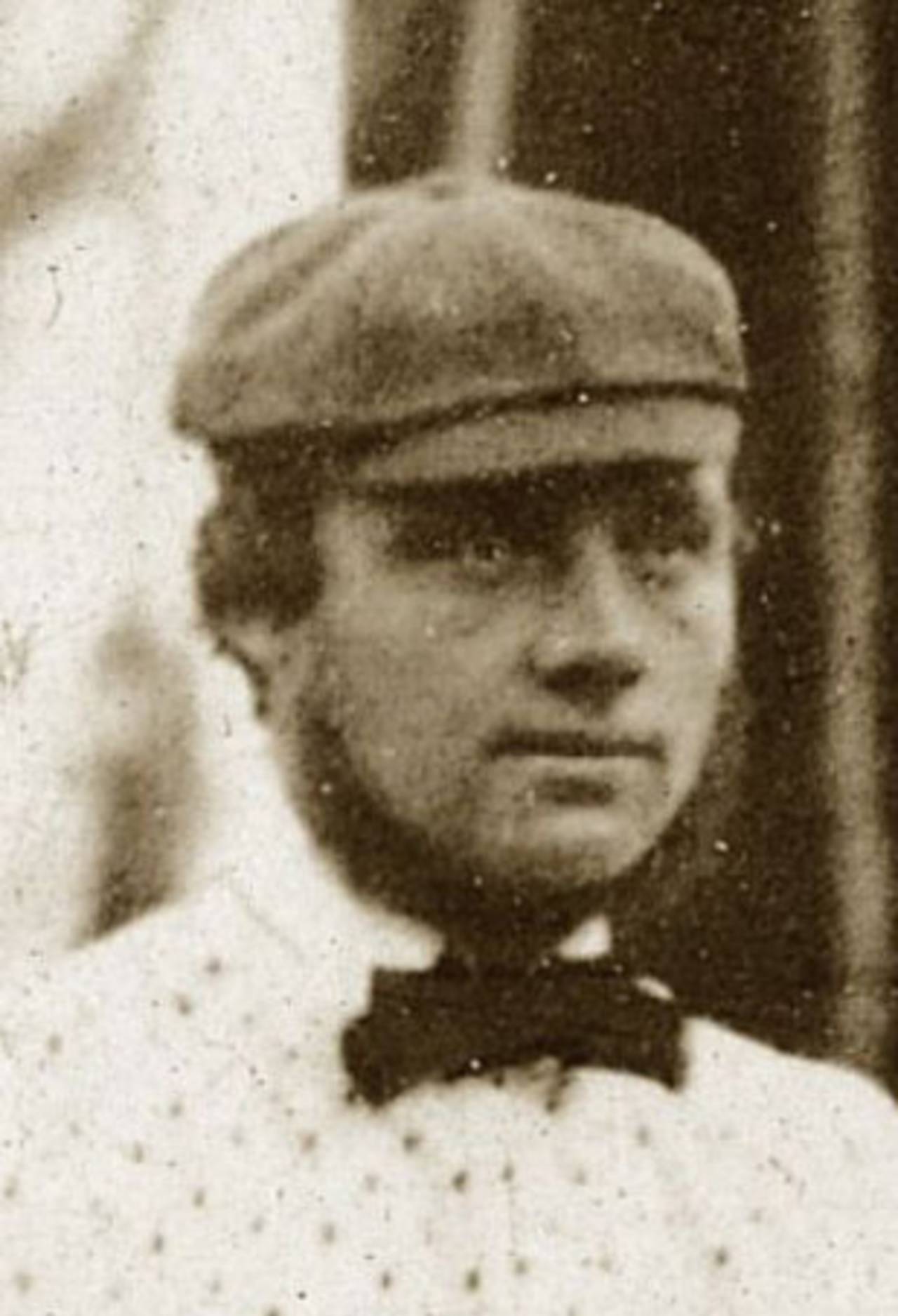Cricket's winter wonderland
As England recovers from a cold snap, Martin Williamson looks back to when the bitter winter enabled England's cricketers to enjoy a short alternative season
Martin Williamson
16-Jan-2010

Bob Carpenter: raised a side to play on the ice at Cambridge • Getty Images
At a time when experts claim the world is getting warmer, until the last month or so it was hard to remember that within England's relatively recent past there were some of the bitterest winters on record. In terms of longevity, few can compare with that of 1878-79.
While the country shivered, however, cricketers capitalised on the conditions to stage a virtual season on ice. There were so many games played that the Wisden Cricketers' Almanack of 1880 devoted several pages to them.
The weather took a turn for worse in October 1878 and for more than a year the record books took a pounding. That winter was the seventh coldest; every month in 1879 saw temperatures well below average; 1879 saw the tenth coldest spring and the 13th coldest summer. The Wisden editor waxed lyrical on the subject. "The cold, nipping bronchitis creating winds seemed loth [sic] to leave the land they had sorely stricken with distress, disease and death," he wrote. "But there is no black cloud without a silver lining."
That silver lining came in the form of sub-zero temperatures that started in early December 1878 and continued across the country until the following February. That allowed cricketers to come out of hibernation to play hastily arranged matches. Such games had taken place occasionally since the early 19th century, but now they thrived.
The rules of these games varied, as did the numbers on each side. Many, for example, had regulations forcing batsmen to retire when they had reached a certain score, usually between 20 and 30.
Several matches were recorded in the week before Christmas 1878, with the most high-profile taking place on the Cambridgeshire Fens when the town took on the university over three days.
The Fens were sometimes deliberately flooded to allow skating, and Charles Pigg, a student at Peterhouse, challenged Bob Carpenter, a first-class cricketer with Cambridgeshire, to raise a side to play on a 20-acre site.
As expected, all players used skates. Cambridge Town batted first, closing the first two-hour day on 193 for 9. The following day, Wednesday, Carpenter and Dan Hayward added a further 132 in 70 minutes, the innings eventually totalling 326. Hayward's dismissal came about when he lost his footing, fell over and was bowled.
By the time the University batted the ice was rutted and worn, and while fielding continued to be a virtual lottery, batting became even harder. Despite this, they reached 61 for 1 by the end of the day. They extended this to 274 for 4 by the end of the third day and the captains agreed to settle on a draw.
"Fielding was delightful, and the chasing of the ball into space when it eluded you was most exhilarating," recalled Charles Boucher, whose full toss had dismissed Hayward, in a letter to the Times in 1929. "Only lob bowling was allowed and umpires were most severe on no-balls."
This game was unusual for the high scores recorded. More commonly, sides were bowled out for paltry totals. In Gateshead a game was played for charity, with a Mr Parr's XI winning even though they managed only 30. In Sheffield, a Mr Chatterton's team were bowled out for 35 by a Mr Gilliott's side, but returned early in the New Year to make 181 and bowl out their opponents for 28.
The game caused no end of amusement owing to the difficulties encountered by the players while bowling, batting and fieldingWisden
The most unusual contest took place on the ice in Windsor Park on January 9, 1879 under the light of the full moon. The whole area had been hit by appalling floods, followed by a sharp and sustained frost. The Thames froze, and in London police had to be employed to keep people from skating on ponds. But despite this, several hundred spectators turned out to watch a Mr Gage's side score 17 for 8 to defeat a team raised by Mr Bowditch. "The game caused no end of amusement owing to the difficulties encountered by the players while bowling, batting and fielding," reported Wisden, perhaps slightly unfairly.
As the cold weather continued, so did the cricket. A frozen lake by a dam in Brampton staged a close match between Chesterfield and Sheffield on January 25, and on the same day at Partington Corrs in Hull, a certain D Hearfield scored the only recorded hundred of the winter season.
Three days later more than 2000 people turned out to watch a match in Grimsby, where the only incident of note was a large number of wides in two small totals, suggesting rather unsympathetic umpiring.
Wisden was moved to praise the "excellent wicket" in Sheffield on January 30, where Wingerworth made 162 to beat a weakened Sheffield side by 61 runs.
On February 1, the Marquis of Abergavenny "had the gates of his park [Eridge Castle in Kent] thrown open" and more than 2000 locals flocked to see a game of cricket at one end of the estate's lake, and hockey at the other. Lord Henry Neville, who made 70 out of 228 for his XI, was praised for the "command he evinced over skates and bat". His opposite number, E Williams, replied with 68 before it became too dark to play, with his side 176 for 8.
More matches were planned but on February 2 the thaw set in. Although the bitter cold returned by the end of the week and remained for the next three-and-a-half months, the frost was not as severe and so the ice not thick enough to allow any more games.
Is there an incident from the past you would like to know more about? Email rewind@cricinfo.com with your comments and suggestions.